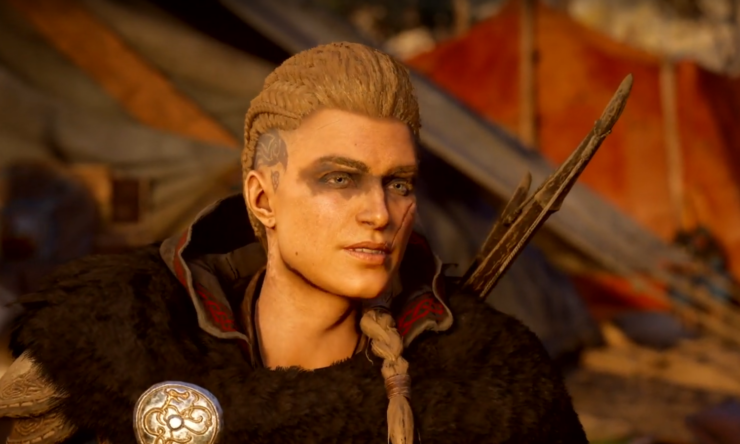A couple years ago on this site I “reviewed” Assassin’s Creed: Origins, which takes place in Cleopatra’s Egypt, the same world in which I set my first historical fantasy novel: it wasn’t a gameplay review so much as it was an extended expression of my astonishment at the amount of history that Ubisoft wedged into the game.
Today, I’m going to take a similar approach to the latest Assassin’s Creed game: Valhalla, which is set (mostly) in early medieval Norway and England.
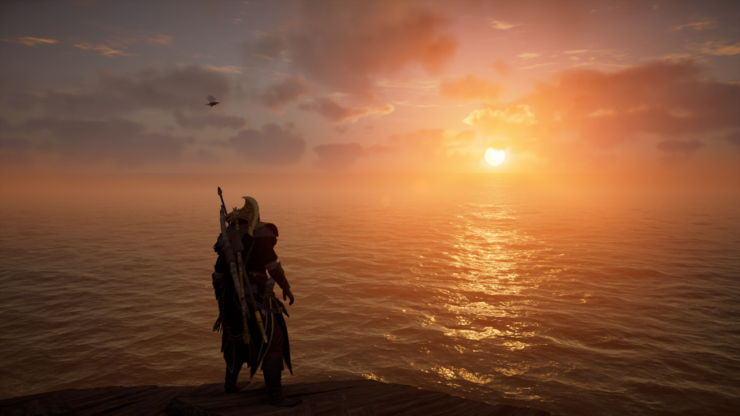
Now, to be clear, I know that this game is ultimately a fantasy. Real folks who went a-Viking in the 9th century didn’t wear magical armors while dual-wielding shields as weapons against massive polar bears under the eyes of their telepathically connected albino ravens.
Nevertheless, despite such fantasy elements, this is a game—a series of games—centered on history… at least insofar as the game can fit history to the needs of gameplay and plot.
And, by Odin’s ravens, what Valhalla manages to squeeze into its dozens of hours of gameplay is remarkable.
There were countless times when I played this game with a grin on my face not because I was managing a magnificent combo attack on some poor fools who’d run afoul of Eivor Wolf-kissed of the Raven Clan—fun though that is!—but because I was standing atop a stave church in Jorvik, listening to snippets of medieval languages in the streets, chatting it up with King Alfred the Great, or just marveling at any one of the countless Easter eggs I’ve discovered in the game so far, whether they were historical, mythological, or even contemporarily cultural (like the delightful surprise of stumbling into Voldemort’s place in early medieval London).
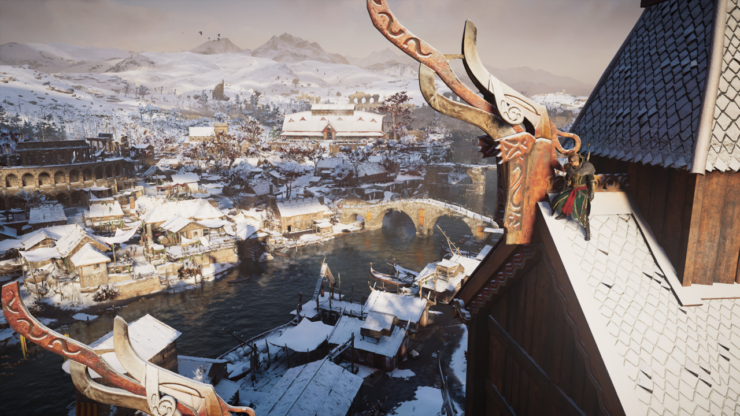
As but a single instance, a couple days ago I was jogging through Alfredian Winchester—seriously, how cool is that already?—and I overheard a man shouting about getting a “jewel” for King Alfred. I immediately skidded to a stop and hopped a couple of walls to learn more. The Alfred Jewel, you see, is a very real thing on display at the Ashmolean Museum in Oxford. An exquisite construction of quartz and enamel encased in gold, the “jewel” was found in Somerset, just a few miles from Athelney, a location with a significant connection to Alfred’s career (as folks learn in the game). In its time, the jewel was probably the handle of a reading aide akin to the yad (commonly called a “Torah pointer”) that’s still used in synagogues today. The in-game image for the jewel isn’t accurate (quite sadly so), but a character’s description of it makes clear that someone at Ubisoft knew exactly what they were talking about. As the inscription on the jewel itself says: “aelfred mec heht gewyrcan” (“Alfred ordered me made”).
These sorts of details abound in the game, and they’re not just historical artifacts. Norse mythology is threaded throughout the narrative (including a visionary jaunt to Asgard and more), and it even shows up in little things, like when I randomly found the fabled ring Andvaranaut because I stumbled upon “Loki’s rabbit” (though it should’ve been an otter), or when I laughed aloud because I paid attention to Basim’s shirt at a key moment late in the narrative.
Another thing I appreciate about the game was how much work was done to make Rome present in Eivor’s England. By amazing coincidence, playing Valhalla was my personal reward for completing a forthcoming popular book—Never Greater Slaughter: Brunanburh and the Birth of England—that details the history (such as we know it) of the events and the people around which Valhalla is built: Alfred and Guthrum and all the rest. To speak of that history is to speak of Rome both in memory and reality, as I refer to in this passage about the arrival of Ivar the Boneless in York (Jorvik):
We’ve already talked about the Roman departure from Britain, but it’s important to underscore that this never meant the erasure of Rome. We can still see the traces of Roman presence across the countryside today, and Ivar, as he was entering York in 866, was two centuries closer to the building of the magnificent Colosseum in Rome than he was to our own day.
Exactly what he would have thought about Rome, we can’t know. But he would not have been able to deny its physical presence all around him. Roman roads remained the arteries of both commerce and war across much of the former empire. Roman engineering still brought water, cleared sewage and underlay the structures of some of the biggest cities. Roman walls could still serve as protection. And even its abandoned magnificence could dominate the landscape. In the poem ‘The Ruin’, an anonymous poet of early medieval England marvelled at the remnants of a Roman city—likely Bath—that had been empty for centuries:
Wondrous are these wall-stones, wasted by fate,
The courtyards crumpled, giants’ works corrupted,
The roofs tumbled down, towers in ruins,
Frozen gates fractured, frost mixed in the mortar,
Scarred storm-roofs raked and scored,
Undone by the years. The earthen grip yokes
Its proud builders, perished, long departed,
The hard grasp of the grave, until a hundred generations
Of people have passed. But this place outlasted,
Grey with lichen, stained red,
Knew one reign after another,
Still stood after storms. The high arch has succumbed,
But the wall-stone still stands in the winds …
This Old English poem, which is one of my favorites, was arguably written around the same time Eivor would’ve been traipsing around England, and it fits quite neatly with what we see in archaeology. While most “medieval” reimaginings ignore this Roman presence, Valhalla makes it integral to its landscapes. If anything, one could complain that the game goes too far by not having some of its Roman ruins be ruinous enough, but I’d honestly prefer this as an over-correction to ignoring their presence altogether. In my scholarship I harp a lot on this continuity between human cultures—Rome didn’t “fall,” for instance, so much as it changed—and I can see that Valhalla will spread that same kind of message to millions more people than my books will ever reach. This is a good thing, in my view.
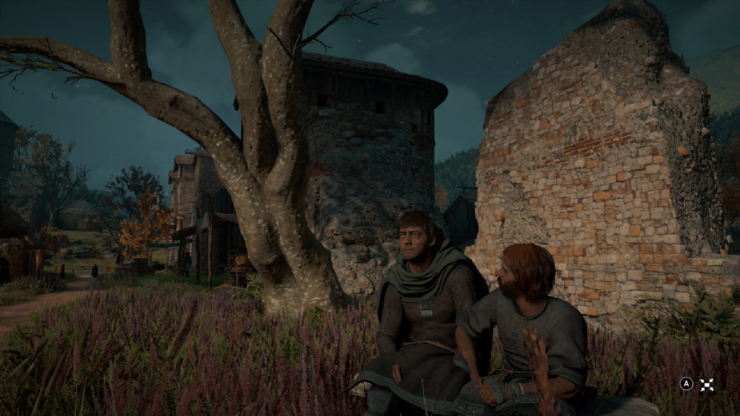
Of course, not everything Valhalla spreads will be good. There are quite a few cringe-worthy inaccuracies. Some are obvious, like the decision to carve England up with rivers (even if I understood the gameplay need to spread out the church properties that Eivor’s longship could raid for supplies). Some are less obvious but perhaps more destructive, like accepting the gruesome idea of the “Blood Eagle” execution, which I don’t think existed as its depicted in the game.
Buy the Book
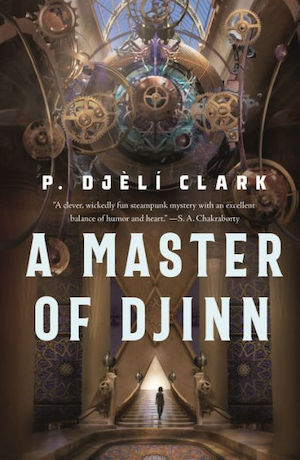

A Master of Djinn
For that matter, while the bloodiness of the fighting (which one can turn on or off in the settings) isn’t remotely unique to this game, its yoking of violence and the Vikings could not be worse timed: It feeds directly into myths of medieval Europe that have been dangerously co-opted by white supremacists. I was able to accept such things as the false popular conceptions that they are and nevertheless enjoy the game as a game, but I do worry that many people will play the game and come away thinking that they’ve experienced some reflection of reality. That points to bigger issues with our difficulties grappling with the reality of our past — issues I don’t have time to discuss here.
I was also disturbed by the clothing and climate. The game, for instance, imagines a staggering climate disparity between Sussex and Northumbria — a difference that is both completely unrealistic and entirely unnecessary. Sure, it gets cold in York (one of my favorite cities), but it ain’t the bloody Arctic. Parts of Norway are the Arctic, but even then Ubisoft cranked up the cold way too far, especially measured against the parts of Scandinavia from which these Vikings were sailing.
Making this worse at times is the clothing. More specifically, the women’s clothing (or lack thereof). There’s an entirely unnecessary scene at a brothel that appears to exist solely for the purpose of presenting some naked women in the game (because of course there is). And there are many women who were unnecessarily presented in sexually objectifying outfits. The fact that these were all (at least that I can recall) women of “mystical” powers — seers or witches or the cursed daughters of Lerion (an otherwise interesting incorporation of King Lear into the game as a sidequest) — made it worse for me.
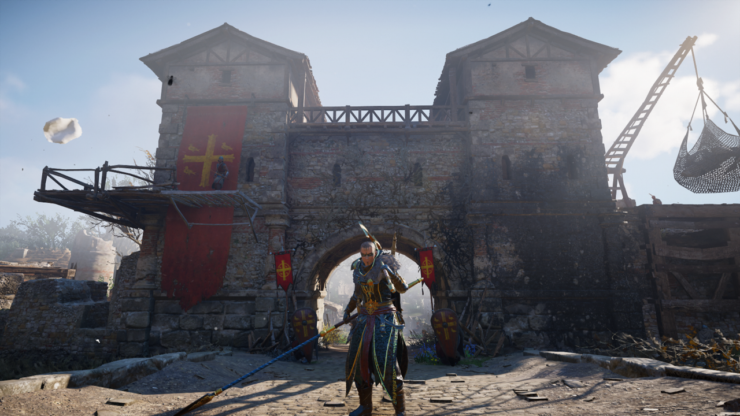
To be clear, there are plenty of women in positions of political or social power within the game who aren’t sexualized in such ways — Eivor, who is canonically female, is one — but that doesn’t mean it isn’t a little rattling to see a Norse priestess showing off skin in an entirely non-Norse priestess outfit while walking around a non-Norse landscape.
Setting aside these misgivings — and gameplay oddities like inexplicably lacking the ability to preview the stats and appearance of shop items — I thought Valhalla was a great time. I loved that it consistently incorporated Norse cultural elements like flyting. I loved that it incorporated stories of St Brendan. I loved how it left unclear whether the Sons of Ragnar were brothers by blood or by oath (a question I’ve lost sleep over). I loved putting that foolish thegn (as the Anglo-Saxon Chronicle calls him) Ceolwulf II onto the throne of Mercia and sending that bastard Burgred packing. I loved the little touches like Alfred’s burnt cakes.
Really, when all is said and done, I just loved being Eivor and can’t wait to be her again.
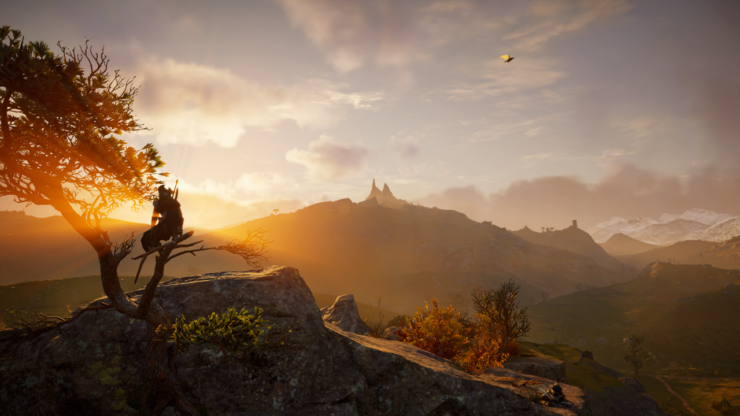
To that end, Ubisoft, word on the street is that Valhalla expansions are set for Ireland and Francia, but can I put in a plug for Wales? The death of Rhodri the Great in 878 would provide a really excellent backdrop for a continuation of Eivor’s world while introducing some fantastic (and fantastical) new components.
You know, something to tide us over while my raven waits to hear from your raven about helping you construct that Assassin’s Creed title set in the Hundred Years War. I mean, you are doing that, right?
Michael Livingston is a professor of medieval culture at The Citadel and a two-time winner of the prestigious Distinguished Book Award from the international Society for Military History (in 2017 and 2020). He’s the author of the recent fantasy novel Seaborn (Audible 2020) and a forthcoming popular history of the Valhalla period, Never Greater Slaughter: Brunanburh and the Birth of England (Osprey 2021).










